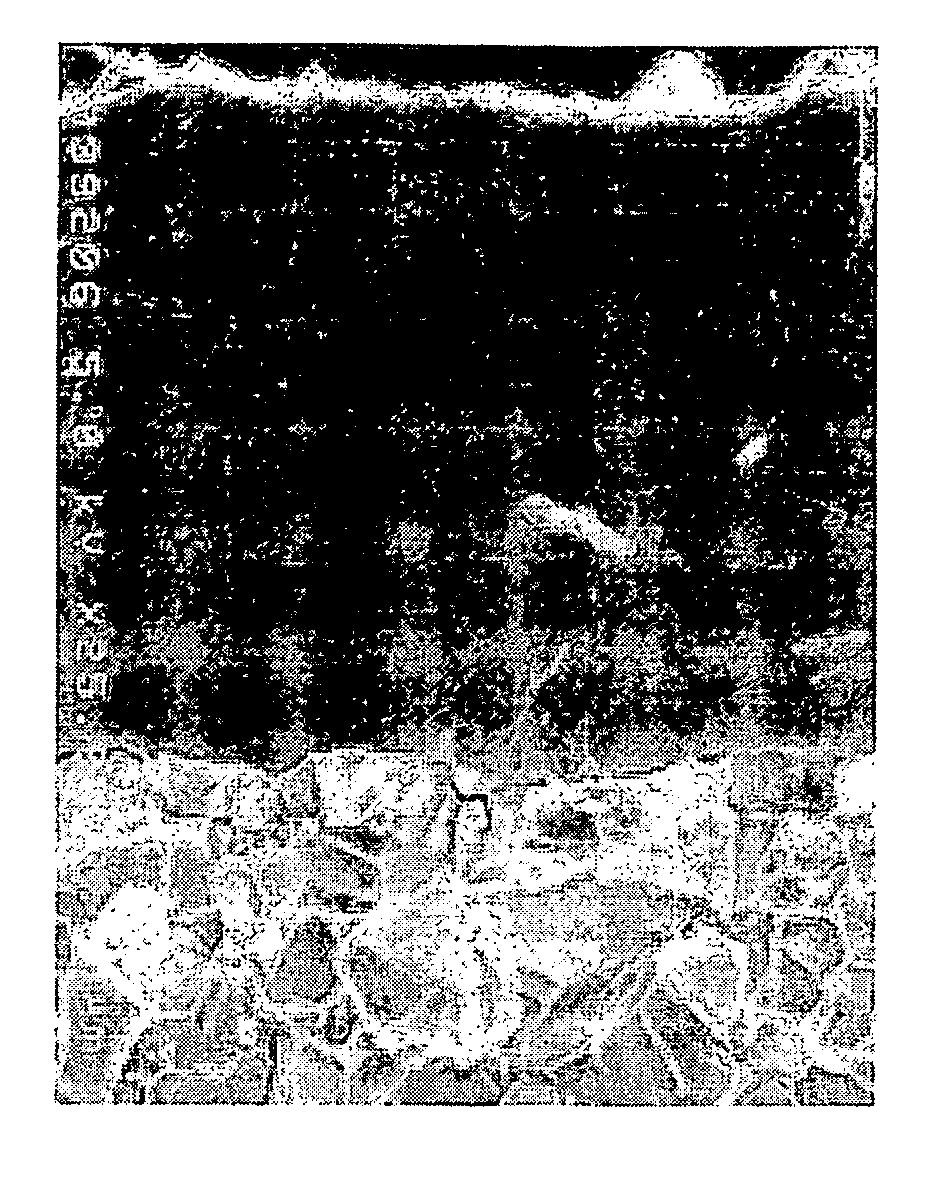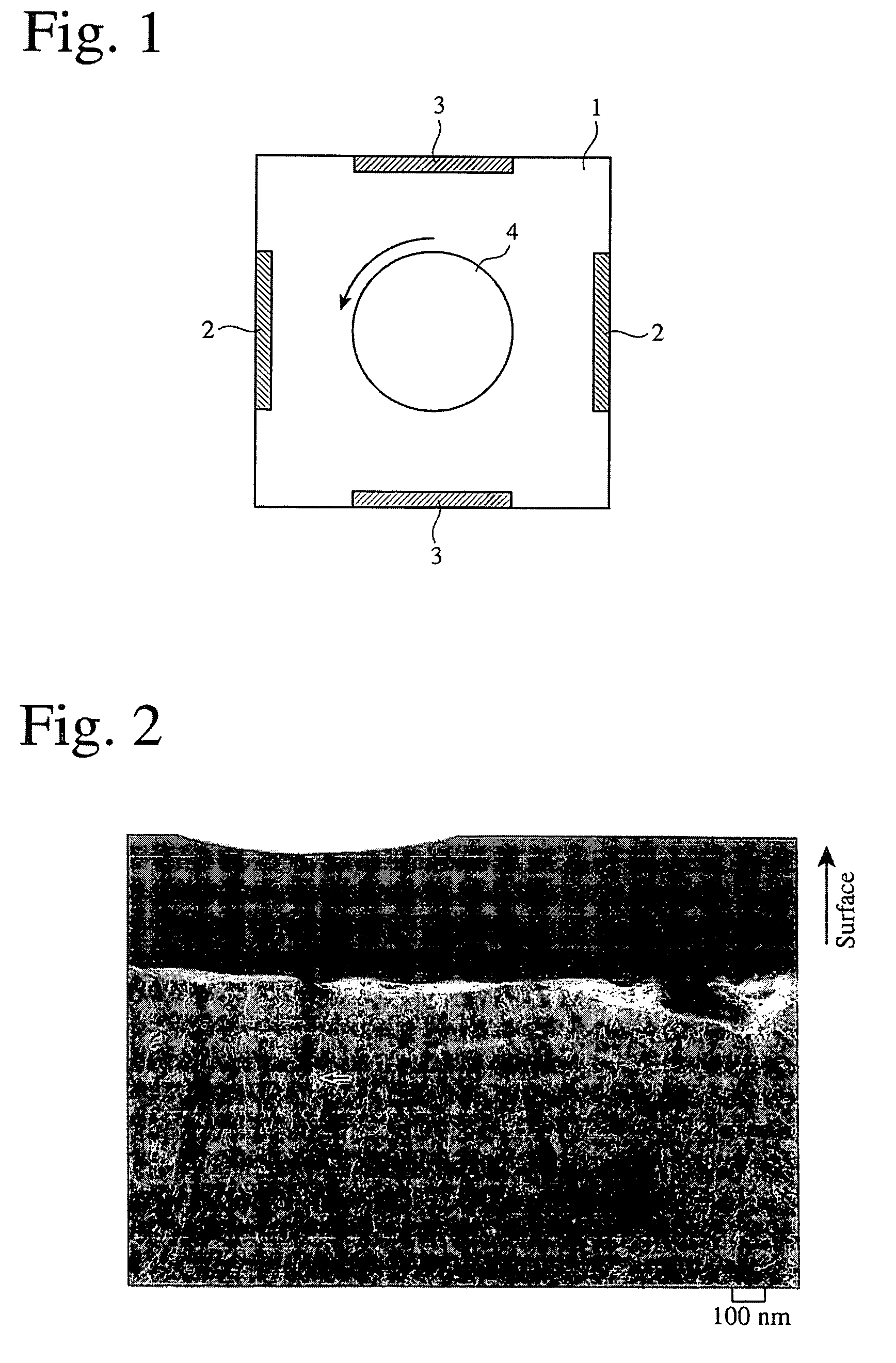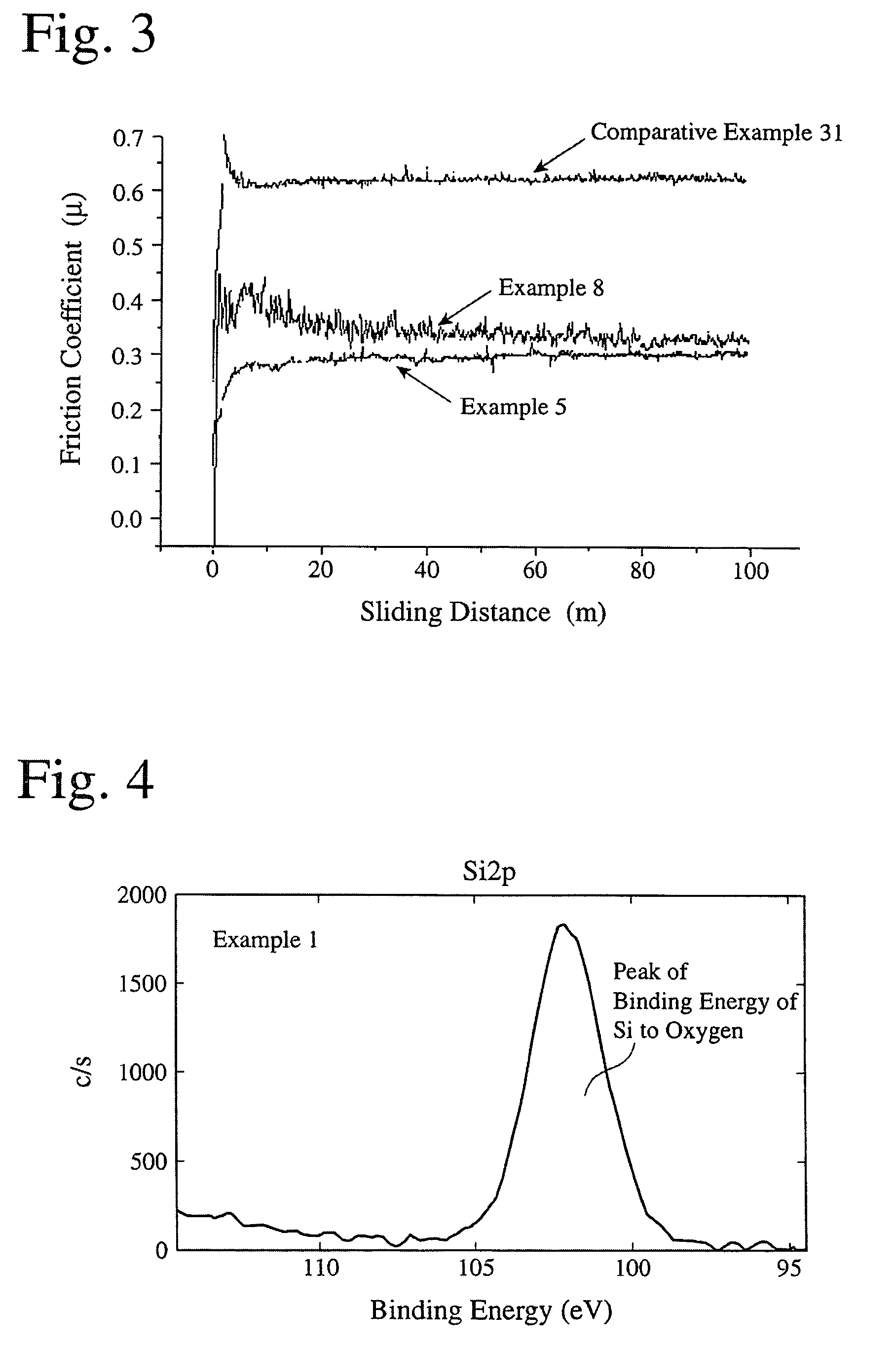Hard coating and its formation method, and hard-coated tool
a technology of hard coating and tool, which is applied in the direction of instruments, elevators, other chemical processes, etc., can solve the problems of insufficient seizure resistance of conventional hard coating tools, and inability to obtain hard coating tools satisfactorily usable under severe cutting conditions. , to achieve the effect of improving oxidation resistance and wear resistance, high hardness and high breakage resistan
- Summary
- Abstract
- Description
- Claims
- Application Information
AI Technical Summary
Benefits of technology
Problems solved by technology
Method used
Image
Examples
examples 1-15
, COMPARATIVE EXAMPLES 1-27, AND CONVENTIONAL Examples 1-4
[0075]Using a small vacuum chamber apparatus 1 comprising AIP targets 2 and MS targets 3 as an evaporation source shown in FIG. 1, a hard coating was formed on a substrate of each cemented carbide insert placed on a rotating table 4 in Examples 1-15. The AIP targets 2 were made of alloys having various compositions, and the MS targets 3 were made of metal sulfides. A reaction gas used was an N2 gas, a CH4 gas or an Ar / O2 mixed gas depending on targeted hard coating compositions. To change the distribution of an S content in the hard coating in a lamination direction periodically and smoothly, plasma was generated at a reaction gas pressure of 3.0 Pa, simultaneously by both coating methods of AIP and MS. A substrate temperature was 400° C., and bias voltage was −40 V to −150 V. In Comparative Examples 1-27 and Conventional Examples 1-4, on the other hand, a hard coating was formed on each insert under the same conditions as in...
examples 16-29
, COMPARATIVE EXAMPLES 28-41, AND CONVENTIONAL EXAMPLES 5-11
[0098]Using a small vacuum chamber apparatus 1 shown in FIG. 1 comprising AIP targets 2 and MS targets 3 as evaporation sources, a hard coating was formed on each insert substrate of cemented carbide placed on a rotating table 4. The AIP targets 2 were made of alloys of various compositions, and the MS targets 3 were made of metal sulfides. A reaction gas was an N2 gas, a CH4 gas or an Ar / O2 mixed gas depending on targeted hard coating compositions. To change an S content distribution in the hard coating periodically and smoothly in a lamination direction, the pressure of the reaction gas was set at 3.0 Pa to generate plasma for both film-forming methods of AIP and MS. The substrate temperature was set at 400° C., and bias voltage of −40 V to −150 V was applied.
[0099]The resultant hard-coated inserts were subjected to cutting tests under the following condition 3. Works were made of SKD61 steel (hardness HRC: 45) for die-ca...
PUM
| Property | Measurement | Unit |
|---|---|---|
| friction coefficient | aaaaa | aaaaa |
| thickness | aaaaa | aaaaa |
| thickness | aaaaa | aaaaa |
Abstract
Description
Claims
Application Information
 Login to View More
Login to View More - R&D
- Intellectual Property
- Life Sciences
- Materials
- Tech Scout
- Unparalleled Data Quality
- Higher Quality Content
- 60% Fewer Hallucinations
Browse by: Latest US Patents, China's latest patents, Technical Efficacy Thesaurus, Application Domain, Technology Topic, Popular Technical Reports.
© 2025 PatSnap. All rights reserved.Legal|Privacy policy|Modern Slavery Act Transparency Statement|Sitemap|About US| Contact US: help@patsnap.com



